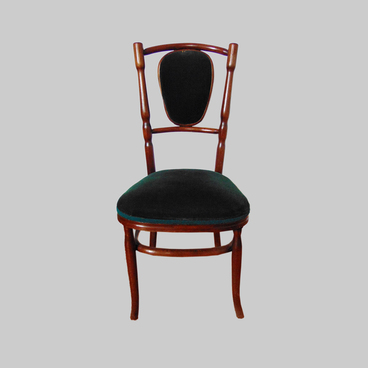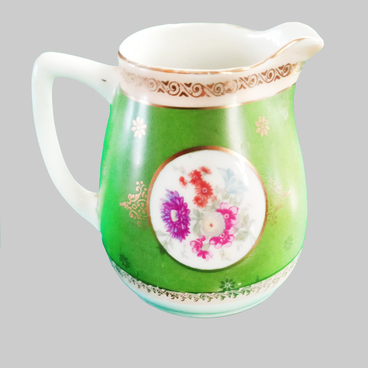In the 1880s, across the developed world, a new technological fashion is beginning to spread at lightning speed: electric lighting. They were immediately interested in people who were wealthy and savvy in the latest innovations, and by the beginning of the twentieth century, the light from incandescent lamps had spread so much that it ceased to amaze small town residents.
Electric lighting devices most likely came into use in the Aksakov family around this time. The table lamp on display in the large sitting room was produced in the early 20th century. Its lampshade is made of frosted glass in the shape of a tulip and is compact in size. This feature immediately distinguishes an electric lamp from lamps that use fuel or candles: the latter often use a large lamp shade to increase the reflection area of the light source. The stem of this lamp is mounted on a hinge to easily change the position of the lampshade and adjust the light intensity and direction of light flux.
The appearance of electric lighting at the end of the 19th century came at a time of style chaos, which is noticeable, albeit in the restrained, but eclectic outlines of the table lamp from the museum collection. In those days, grown bourgeois class aspirations for the aristocratic respectability of their home revived interest in antiques and led to a revival in architecture and furniture of historical styles of different eras. At the same time, the foremost artists and architects of that time had already begun an intensive search for new artistic paths, which eventually led to the emergence of the Art Nouveau style.
In the electric lamps of the late 19th century, two directions were immediately determined: constructive (light, technological form, devoid of any decor) and decorative (using common style forms of past eras and modernity). Lamps of constructively simple but expressive forms were produced by many electrical engineering firms in the US, Germany, and France. As a rule, they were intended to illuminate work areas and had the ability to adjust the direction of the light flux. The shape of some of them turned out to be so successful that nowadays their serial production is even resumed.
Electric lighting devices most likely came into use in the Aksakov family around this time. The table lamp on display in the large sitting room was produced in the early 20th century. Its lampshade is made of frosted glass in the shape of a tulip and is compact in size. This feature immediately distinguishes an electric lamp from lamps that use fuel or candles: the latter often use a large lamp shade to increase the reflection area of the light source. The stem of this lamp is mounted on a hinge to easily change the position of the lampshade and adjust the light intensity and direction of light flux.
The appearance of electric lighting at the end of the 19th century came at a time of style chaos, which is noticeable, albeit in the restrained, but eclectic outlines of the table lamp from the museum collection. In those days, grown bourgeois class aspirations for the aristocratic respectability of their home revived interest in antiques and led to a revival in architecture and furniture of historical styles of different eras. At the same time, the foremost artists and architects of that time had already begun an intensive search for new artistic paths, which eventually led to the emergence of the Art Nouveau style.
In the electric lamps of the late 19th century, two directions were immediately determined: constructive (light, technological form, devoid of any decor) and decorative (using common style forms of past eras and modernity). Lamps of constructively simple but expressive forms were produced by many electrical engineering firms in the US, Germany, and France. As a rule, they were intended to illuminate work areas and had the ability to adjust the direction of the light flux. The shape of some of them turned out to be so successful that nowadays their serial production is even resumed.



